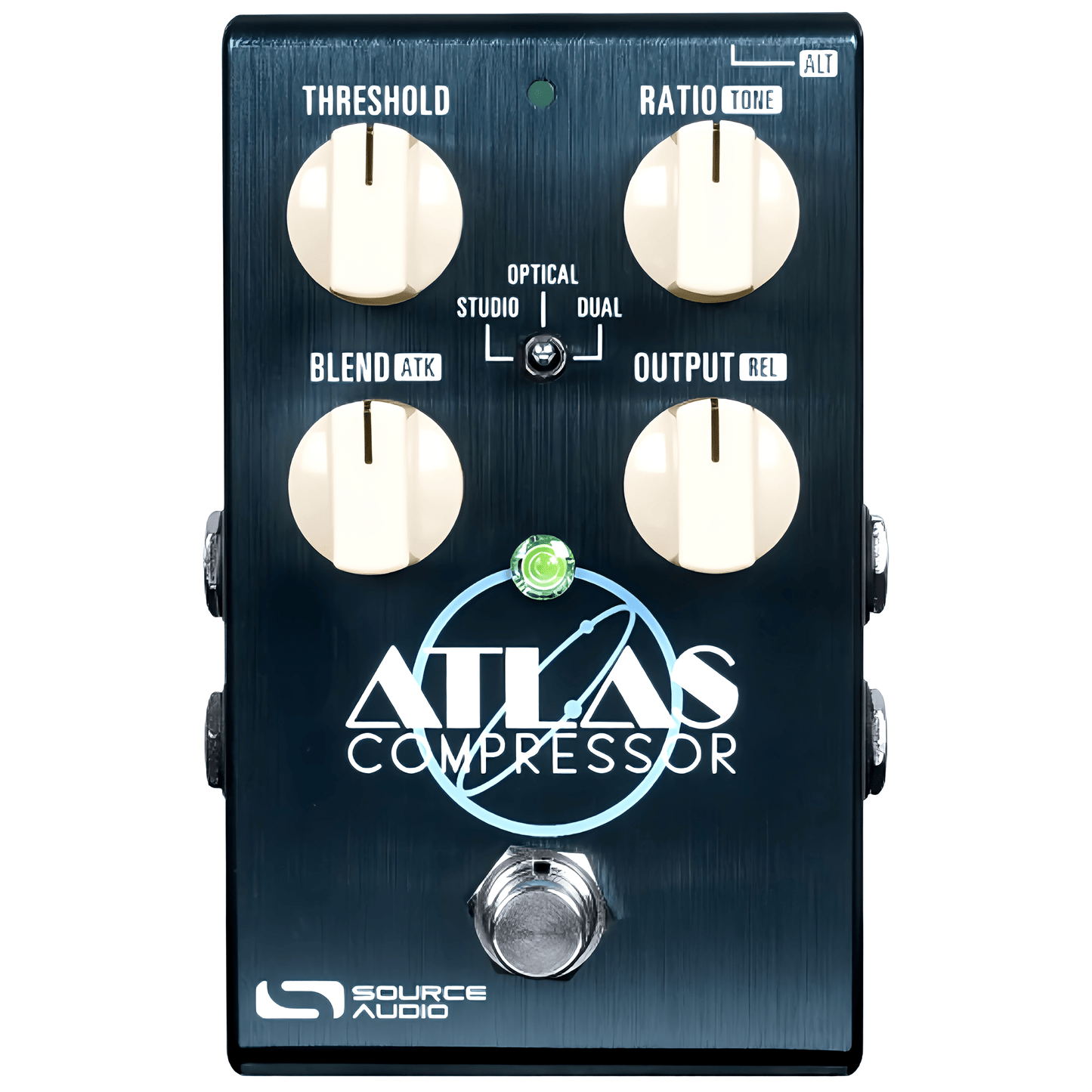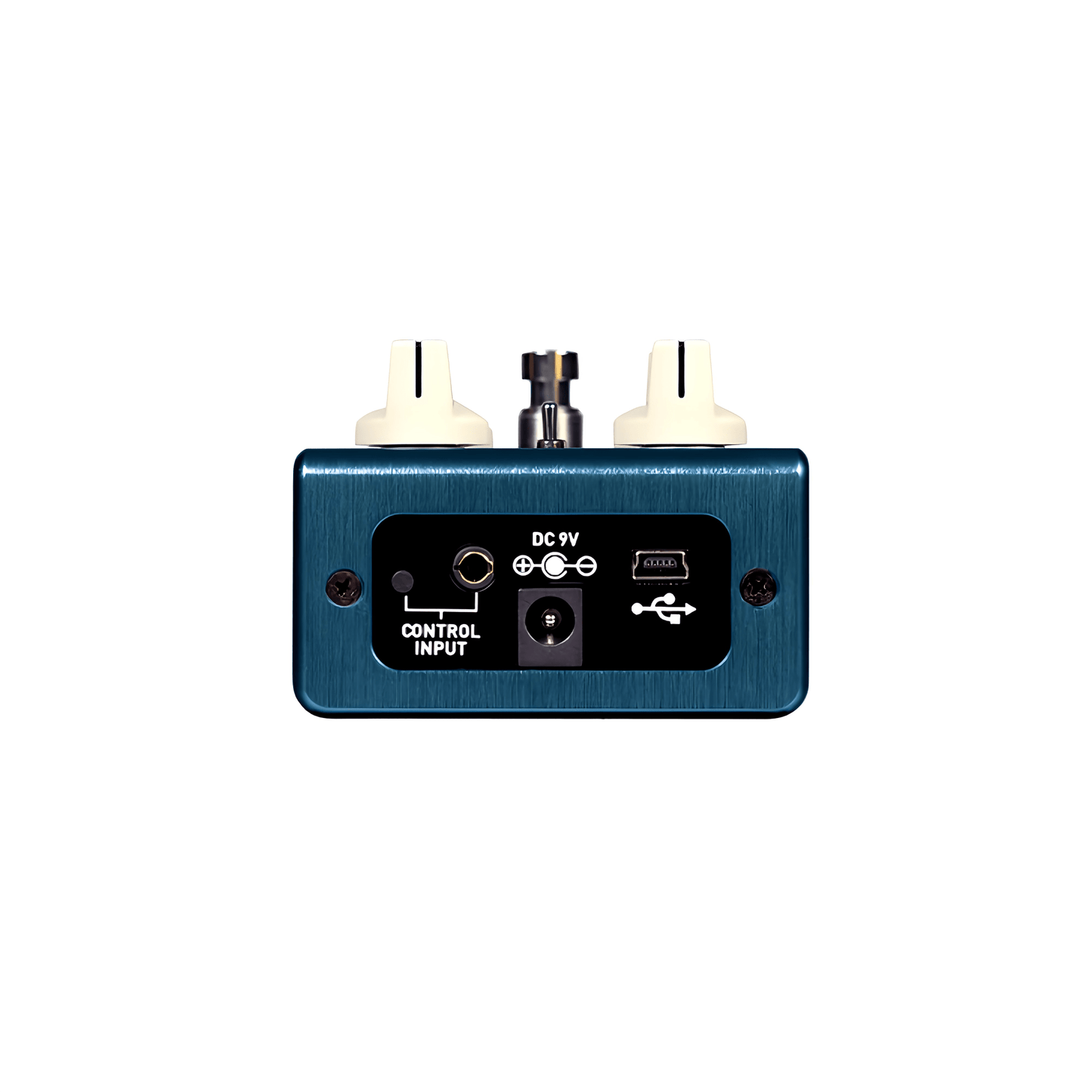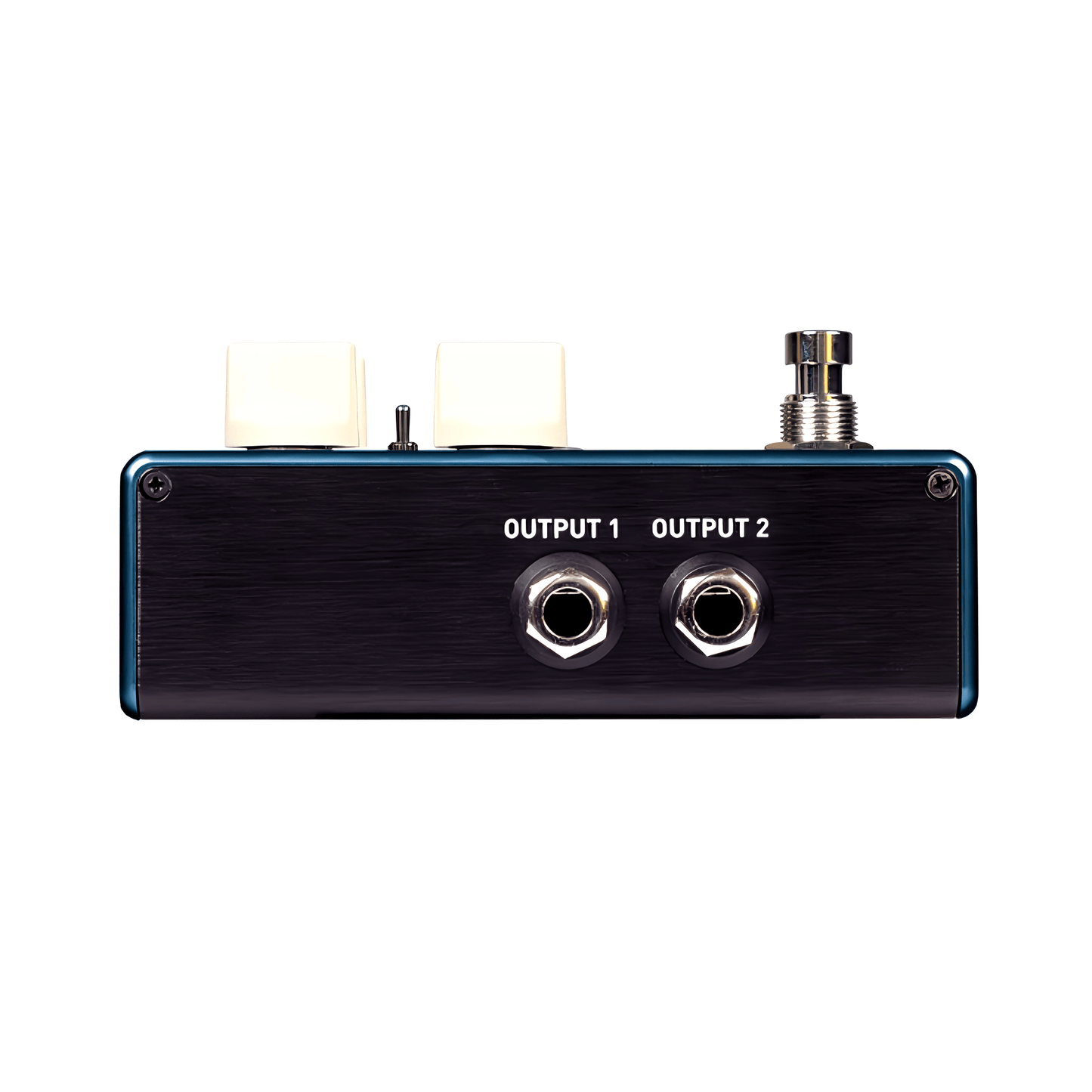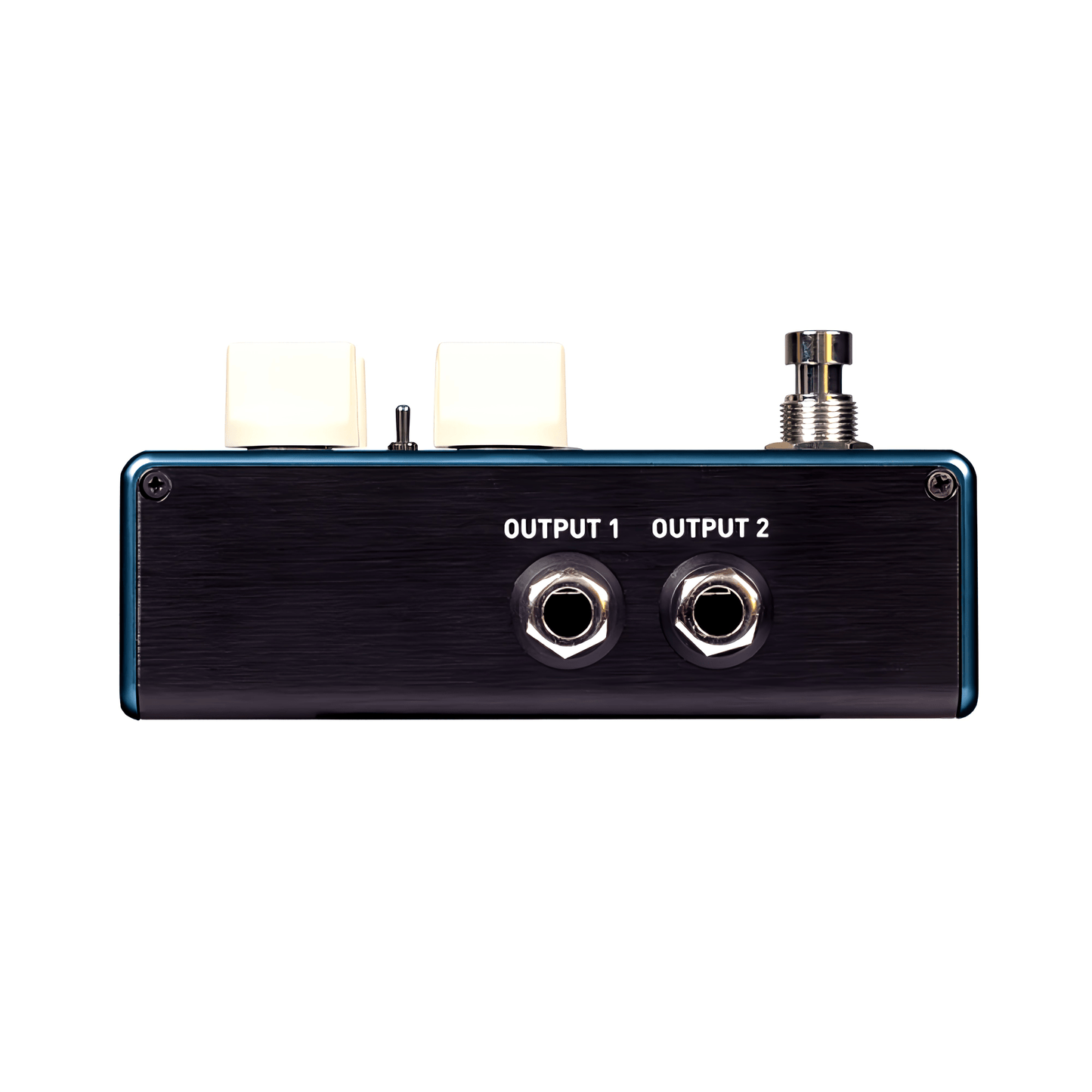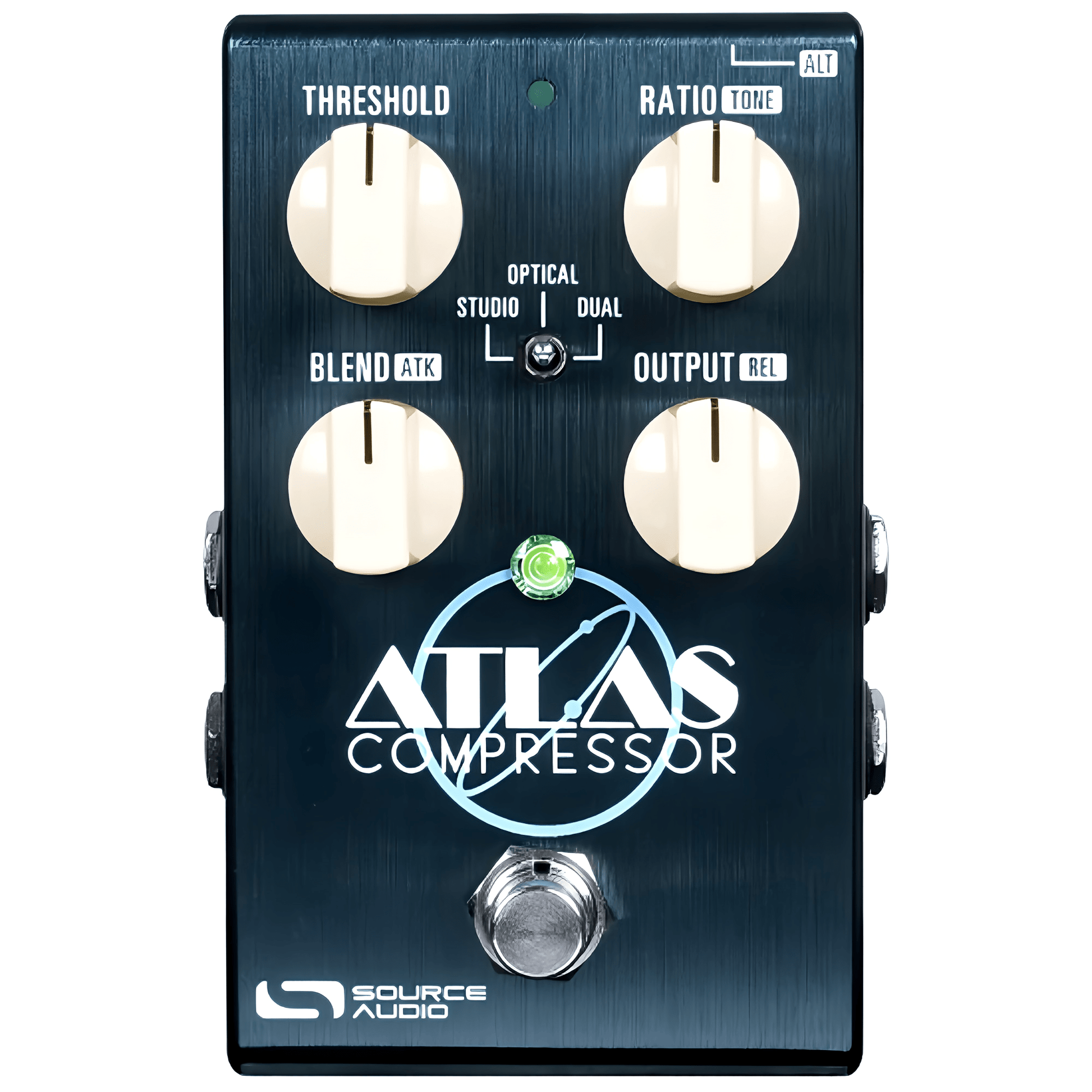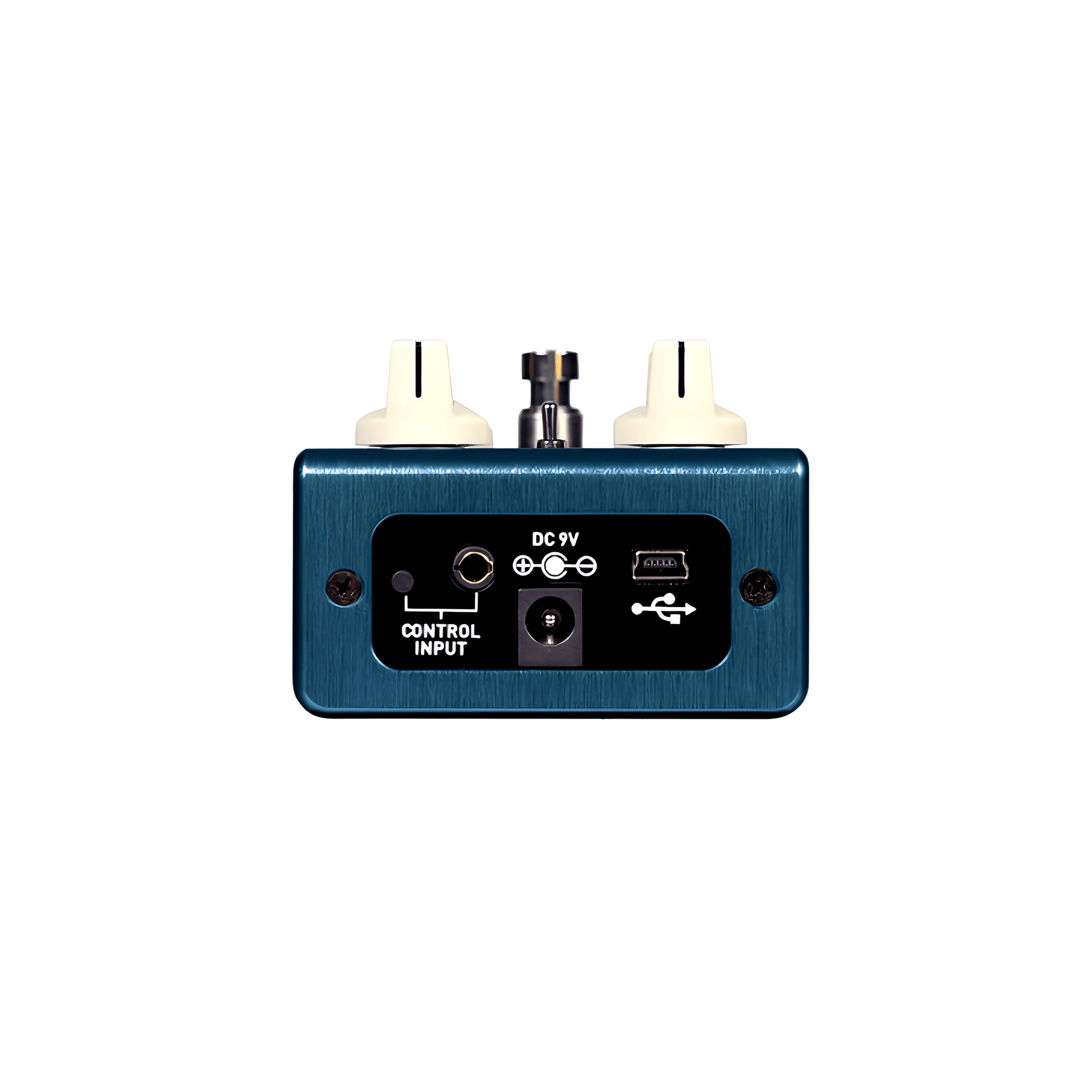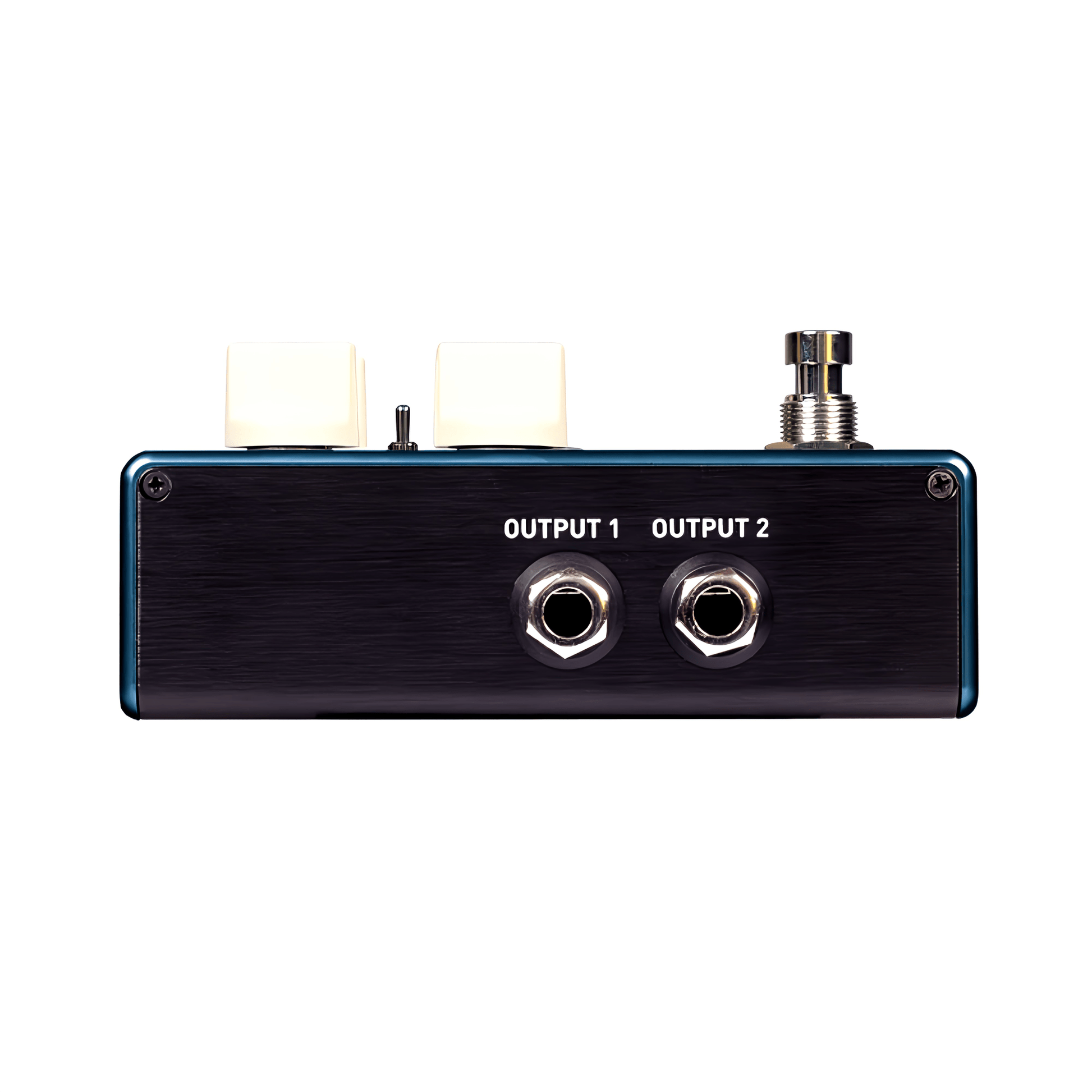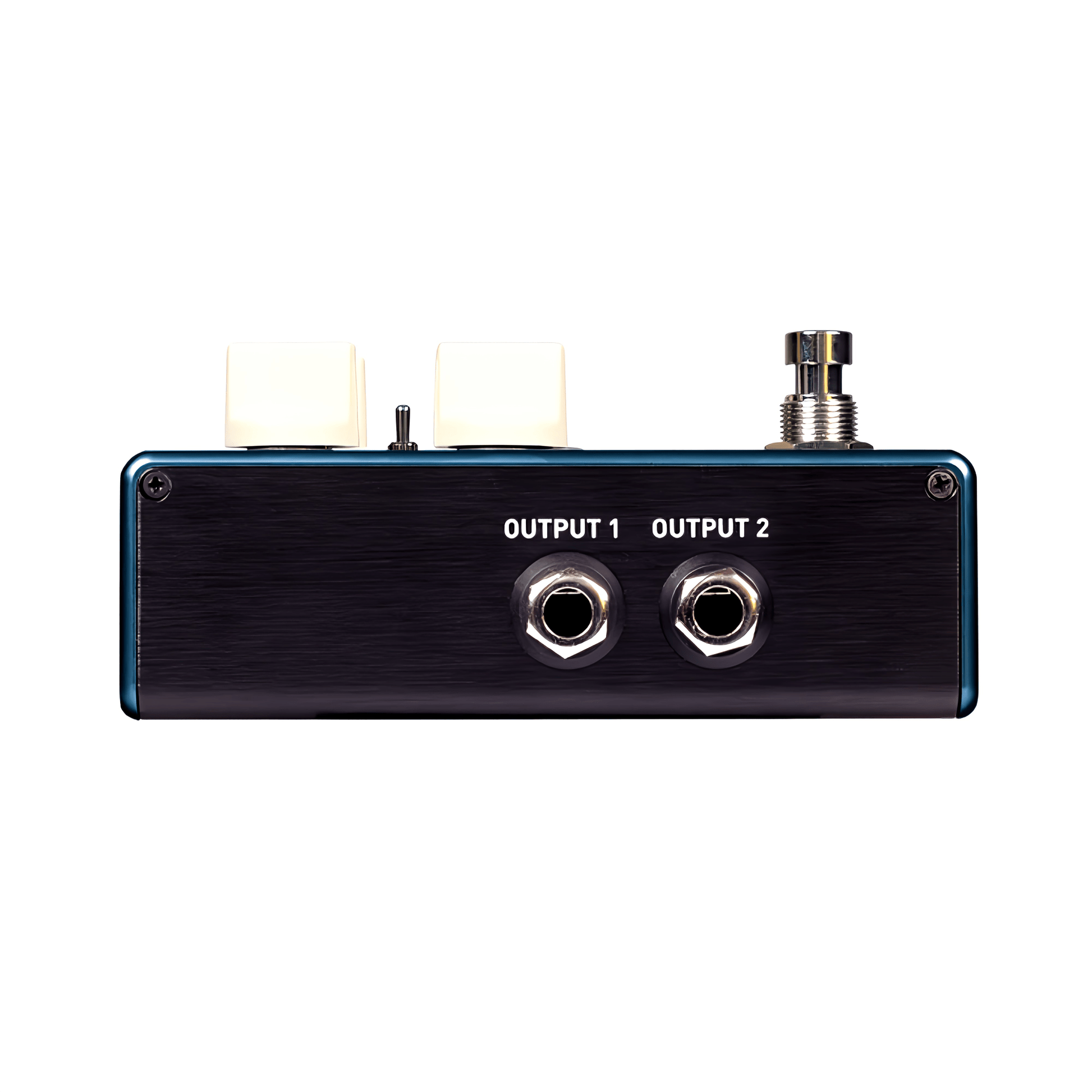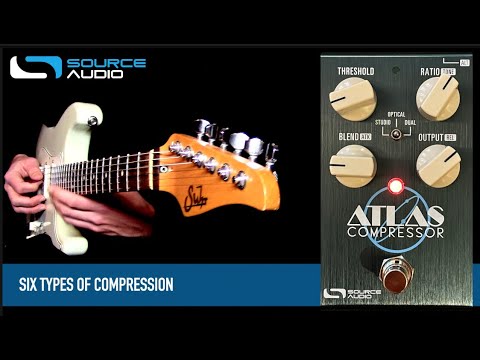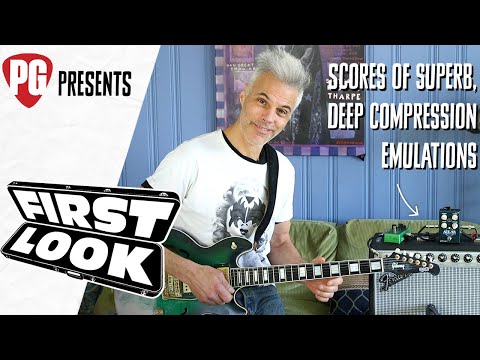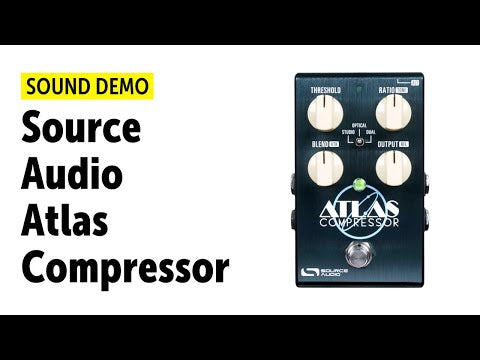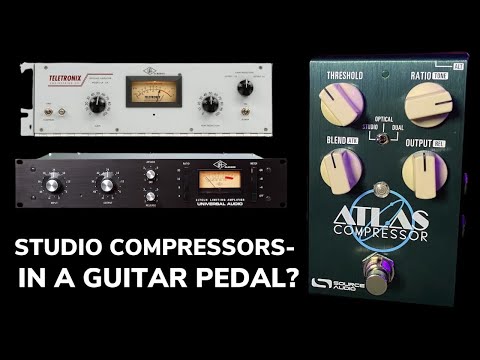Source Audio
Atlas Compressor
Atlas Compressor
FREE 2Day Shipping
FREE 2Day Shipping
USA Free 2 Day Shipping
(Next Day in New England)
Canada 15USD Flat Rate*
Worldwide 30USD Flat Rate*(Wherever you are)
Flat Rate means no additional charge for more than one pedal.
No Hassle Returns
No Hassle Returns
Pedal Features
Pedal Features
- 6 Types of Compression: The Atlas offers many different styles of compression with sounds inspired by studio rack gear and classic effects pedals.
- LA2A Optical Compression: A faithful recreation of an electro luminescent panel combined with a photo resistor and the resulting warm and smooth compression that has been the standard in studios since the 1950s.
- 1176 Feedback FET Compression: Based on the solid state FET compressor known for its full body and super-fast attack.
- LED Optical Compressor: Inspired by pedals that work on a similar concept as the LA2A, but swap the electro luminescent panel for an LED and a quicker, dirtier response.
- Dual Compressors: Use Atlas’ dual compressors in a variety of ways: in Series, Parallel, or Band Split mode, which provides a separate set of controls for both high and low frequencies.
- Studio Level Compression Controls: Access all the essential compression parameters including Feedback, Ratio, Attack, Release, Makeup Gain, Mix, and Tone, either with the pedal’s knobs or the Neuro Editor.
- Special Bass Mode: With the push of a button, quickly convert Atlas to a special Bass Mode with compressor engines specifically optimized for bass.
Auto Makeup Gain: Dial in sounds quickly. Atlas automatically increases or decreases the Makeup Gain depending on the amount of compression.
Nuero Editor Features
Nuero Editor Features
Connect the Atlas Compressor to the Neuro Desktop Editor (a free download for Mac or Windows computers) or the Neuro Mobile App (free for iPhone and Android) and explore the power of effect downloading, customization, and sharing that comes with every One Series pedal.
- Growing Library of Published Presets: Quickly test and download sounds from the ever-expanding collection of published User Presets created by Source Audio and the rest of the Atlas Compressor/Neuro Editor Community.
- Deep Effects Editing Capabilities: Use the Neuro Desktop Editor (free download for Mac and Windows) or the Neuro Mobile App (free for iOS and Android) to create, store, and share highly customized filter effects.
- Dual Compressor: Use Atlas’ dual compressors in a variety of ways: in Series, Parallel, or Band Split mode, which provides a separate set of controls for both high and low frequencies.
- Dan Armstrong Orange Squeezer: A gritty compression inspired by the vintage 1970s unit that graced classic tracks like Steely Dan’s “Peg” and Dire Straits’ “Sultans of Swing.” Available in the Neuro Editor.
- Look Ahead Compression: A classic studio trick. When engaged, Look Ahead creates an imperceptible latency in the signal that “looks into the future” and allows for an extra quick and smooth attack that without any additional distortion or artifacts.
- Soft Knee:Adjusts the transition curve of the Threshold point. A sharper knee creates a snappy compression and a soft knee creates a more natural sounding compression.
- Side Chain Compression: Use the signal going to Input 2 to trigger the compression applied to the signal going into Input 1.
- Advanced Equalization: Use the 3-band parametric or 8-band graphic equalizers to tweak the tonal characteristics of your compression.
- USB Connection – Use the pedal’s mini USB port to connect Atlas to the Neuro Desktop Editor, which can be used to edit presets or download the latest pedal firmware.
- USB to Mobile App Connectivity - Connect the Mobile App to your Atlas Compressor via the USB port on the top of the pedal and enjoy two-way communication between the pedal and your Neuro Mobile App. This means you can see all of your Atlas preset settings on the App. in real time. (Lightening to mini Type B USB cable for iPhone) (Type-C to mini Type B USB cable for Android).
MIDI Features
MIDI Features
The Atlas Compressor responds to MIDI Program Change (PC) and Continuous Controller (CC) messages via its mini USB port. The USB port handles communication between the Atlas and digital audio workstations (DAW) on Mac and Windows machines as well as external MIDI controllers with USB host support (we recommend the DMC.micro from Disaster Area Designs)
- Preset Saving – Save up to 128 effect presets.
- MIDI Mapping – Use the Neuro Desktop Editor to easily map MIDI Continuous Controller (CC) messages to a comprehensive list of parameters.
- Preset Recall - Use MIDI CC numbers 103(Bypassed) & 104(Engaged) with a CC value of the given preset slot to recall any of the Atlas's 128 MIDI accessible presets.
- "Preset Increment" and "Preset Decrement" are two parameters that can be mapped to any unassigned MIDI CC# using the Device MIDI Map in the Neuro Desktop Editor.
- The Neuro Hub - Connect the Atlas to the Neuro Hub and use MIDI CC messages to control parameters or recall presets.
Additionally, the Atlas can be added to Hub Scenes, is visible through the Hub, and can be controlled by PC messages, giving you the full access to 128 preset slots.
Specifications
Specifications
- Includes 9v DC power supply (300mA / Negative Tip)
- Includes 1/8” to 1/4” cable for Neuro Mobile App connection.
- Power Consumption — 165mA
- USB port — Connects to Mac or Windows PC for firmware updates and the forthcoming in-depth effects editing software.
- Brushed anodized aluminum housing.
- Dimensions: L: 4.5 in./11.4cm x W: 2.75 in./7cm x H: 2 in./5.1cm (including knobs)
Couldn't load pickup availability
The Atlas Compressor offers a comprehensive collection of compression circuits that perfectly capture the tone and feel of the industry’s most sought-after compressors. Straight out of the box, Atlas delivers six different styles of compression, based on classic stompbox compressors as well as high-end rack units like the snappy 1176 compressor and the smooth and gentle LA2A optical compressor. Atlas also features advanced dual-band compression, which provides an independent set of controls for both the high and low frequencies. Each compression engine has onboard controls for Threshold, Ratio, Attack, Release, Output, Tone, and Blend, allowing for fine-tuned control over the compact One Series hardware.
The Optical Rack compressor engine is based on the legendary LA2A studio opto compressors from the early 60s. Optical compression controls its output level with light. Increasing the incoming audio level in the original units caused an electro luminescent panel to shine brighter. A photo resistor monitors that light panel and decreased the audio output level, as the panel got brighter. The result is a very smooth and gentle attack that imparts a full-bodied and natural sound on guitar, bass, or vocal. This compressor sounds great with clean strummed or arpeggiated guitar lines as well as acoustic guitars.
The Studio 76 compressor is based on the 1176 studio rack compressors of the late 60s and early 70s. This solid state FET compressor is known for its full body and super-fast attack. All of the attack times in 1176 compressors clock in at less than a millisecond. Studio 76 is a great compressor for fast and aggressive country pickin’ (think Johnny Hiland), slap bass, slide guitar and much more.
The Cubic Zirconia was inspired by opto compressors that use an LED in place of the LA2A’s electro luminescent panel. Using an LED as an optical compressor’s light source creates faster attack and release times, which generate artifacts that tend to make the compression sound a bit dirtier. This is a great compressor for playing tight and funky riffs on the guitar.
A very aggressive and modern sounding compressor, the Studio Snap is based on hard-knee, VCA feed forward type compressor. It uses two compressors in parallel to handle both RMS level controls (“Root Mean Square” compression means that the compressor will react according to the “average loudness”) AND the peaks. The combination of these two compression approaches gives STUDIO SNAP its character.
The Atlas has two independent compressors that can be routed in a number of different ways. They can run in Series Mode (one running into another). They can also run in Parallel Mode and be mixed together with a Crossfade control. The Dual Band compressor runs in Band Split Mode, which is a version of parallel routing where one compressor controls only the higher frequencies (everything above 333Hz) and the other controls the lower frequencies (everything below 333Hz). With the Dual Band Compressor the high frequencies release faster than the lower frequencies, so as you sustain a chord the low frequencies remain compressed while the second compressor releases the high frequencies. The result is a beautiful blooming effect that accentuates high harmonics. This is a great compressor for slow ringing chords or lead lines with long sustained notes.
We have made it easy to transform the Atlas into a bass guitar specific compression machine. With the push of a button, you can convert all six of Atlas’ onboard factory presets into low-end responsive compression engines, precisely optimized for the complexities of the bass guitar. The dynamic range and attack characteristics are much different for bass than guitar. Typically, to achieve a smooth compressed bass tone, the attack and release ranges for compressors such as the 1176 FET compressor and LED optical compressors need to be dialed-in accordingly. Likewise, in dual compression modes, the cutoff frequency that separates the lower band from the higher band needs adjustments to accommodate the specific frequency range of bass guitar. It is all part of our mission to make the Atlas Compressor the most flexible and easy-to-use compression workstation on the planet.
